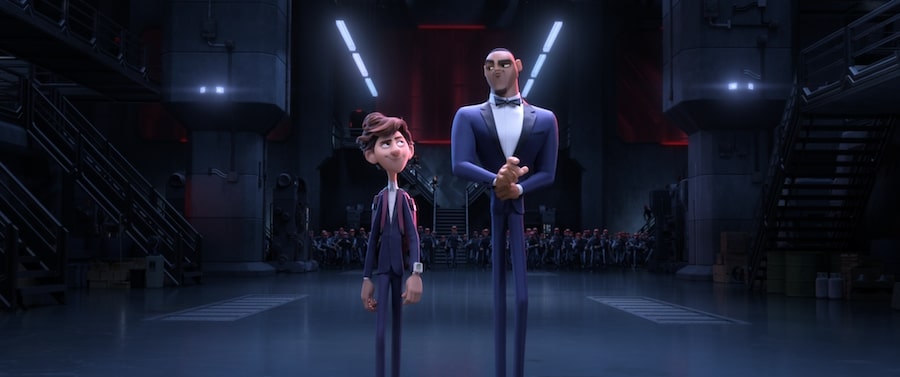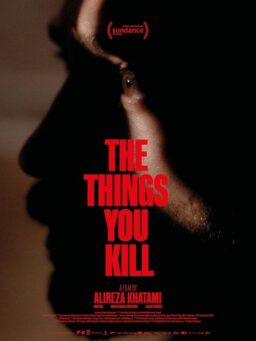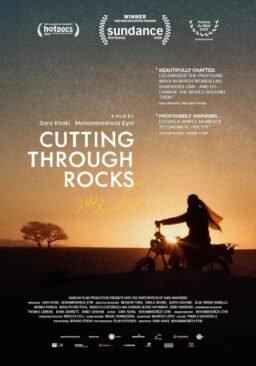In an interview with RogerEbert.com, “Spies in Disguise” directors Nick Bruno and Troy Quane talked about designing their new animated film to look like some of the classic spy stories of the early James Bond era, standing in for stars Tom Holland and Will Smith in the recording room, and why the chase scenes and explosions were not as big a challenge as a simple scene of two people talking.
Tell me about your style inspirations for the look of this movie.
Troy Quane: Spy movies are sexy, which I know is a weird thing to say when you’re talking animation, but we just wanted that swagger and that coolness and that vibe to come through. So we looked to all those great ’60s and ’70s spy movies, but we also looked at Saul Bass and those posters with the graphic, cool, clean lines.
We really didn’t want the movie to feel like a throwback, though. We wanted it to feel very contemporary and very current but we wanted to bring all of those design elements and influences into our world. So there are a lot of clean lines and sharp angles and powerful compositions and then big bold color choices. For a lot of our lighting cues we’d look to the old black-and-white films where you have to be really specific about your lighting. You may have light as though it is coming from a window thrown across the background and you’re like, “Where’s that window?” It doesn’t matter because it looks cool.
It has an elegant martini glass look.
TQ: The character Will Smith plays, Lance Sterling, is actually designed after a martini glass, with the broad shoulders and upper body and thin legs like the stem of a glass.
Is it true that your voice talent, Tom Holland and Will Smith, never met?
TQ: Yes, they didn’t work together. They didn’t even meet until the premiere. Which was a wonderful challenge when you’re making a buddy movie, because the kind of buddy movies we like are those banter-y, comedic, personality interaction stories.

They play off each other really well, even in the rhythms of their speech and the way they interrupt each other. So tell me as directors, how do you make that happen when they are not together?
Nick Bruno: Our whole process is around collaboration. Typically in animated films when you’re reading a script and even when you see it on the film, somebody delivers a line cleanly, and a person replies with a clean line. But we really wanted that banter. When you see people talking to each other, they step on each other’s lines, they stammer, they search for the words, and that was what we wanted in the film.
So we’d go in with clean lines to somebody like Will, and we would read it as is, but then we’d play. We’d try to find a fun way around that scene with a clear goal in mind. And then when we’d find something we go back to Tom, and we’d play with those lines. That way, we’d make some more discoveries, and we’d go back to Will and we’d go back and forth until you really found a true rhythm. It was really finding a musical rhythm to that dialogue. That was a lot of fun and so really when you get that you feel the chemistry and the characters feel really alive.
TQ: Yes, they have sides, they have their lines and we’d read the lines opposite them so they had something to play off of.
So you’d play Tom for Will, then you’d be Will for Tom.
TQ: Exactly, which was a little bit of a selfish want on our part to act with the guys. I brought a recording home of myself acting with Will Smith and played it for my kids, really proud, and said, “Dad’s acting with Will Smith; how cool is that?” They listened to it and they’re like “He’s really great but Dad, you’re horrible.” But what it allowed us to do was if Will suddenly got inspired and started to go off-page, we would just follow along. And then we’d just improvise back and forth. We knew where we needed the scene to go but we could allow them to explore a little bit.
What makes somebody a great voice actor for animation?
TQ: It’s a very different skill set from live-action acting, but a lot of it doubles up. A good actor is a good actor, but you take away a lot of tools from their toolkit when you don’t see their performance. We’re looking for people who really will embody all those little nuances of language because that’s the only tool they have left to perform with. And we’re looking for somebody who is spontaneous. Our style of directing is that we like to have people who are willing to improvise a little bit and have some fun. Our job is to make that room comfortable so that they feel like they can project a little, because it is a sterile environment for an actor in a sound booth. So, we try and set the mood and set the story.
NB: And those little nuances that Troy is speaking about really make it feel sincere. That sincerity is so important. It’s so hard when you’re just reading a line—it can feel like a read line. In fact, when you watch a lot of animated films my own gripe with them is you feel like there’s somebody in a booth reading.

There are a lot of cool gadgets in the movie. Which one would you like to have in real life?
NB: Oh, I would say the kitty glitter that make people feel safe and happy. But then there’s a part of me that’s like, “I’ve got enough glitter at my house as it is.” But I love the idea of how that could actually work because it’s based on some real science; it releases serotonin when you see that. You feel happy and it reduces your aggression. There is actually some belief that some of that stuff can work, so when I see that I see hope.
TQ: For me it’s the multi-pen hands down because even when I was a kid those multicolored pens were a coveted item in everybody’s pencil case. You press one button and it’s orange, another one and it’s green. They were the coolest and you could write every letter in a different color. Walter’s taken that cool idea and in his multi-pen every color is a gadget. You never know what sort of exciting thing you’ll get out of it.
Of all animals, why turn your spy into a pigeon?
NB: Well, originally, there was a pigeon in the short “Pigeon Impossible,” that inspired this film. But when you start to actually turn it into a movie you’re still looking at what the best animal is for a spy movie. When you do your homework, pigeons really are.
TQ: All those nature facts in the movie about pigeons are real.
NB: Pigeons really fly up to 90.7 miles per hour and they can see at a faster rate than the human eye can see, so it’s like pigeon slow-motion. They can really see almost up to 360 degree vision which is why you can’t sneak up on them and they’re in every major city around the world.
TQ: It’s great cover for a spy, but beyond that the movie is about Lance Sterling, the world’s greatest spy; this guy is amazing but he flies solo. He does not work well with others, he doesn’t trust people, he doesn’t put his faith in people. He thinks he’s stronger alone. So part of turning him into a pigeon was stripping all of that amazing physicality away, turning him into this little goofy soft little animal. But the other thing about pigeons is they’re a flock animal so by nature they want to congregate. They want to come together. Ultimately that’s the thematic story Lance needs to learn. He realizes even in this form he’s stronger because he has the help of others around him. So, it was a duality of cool spy abilities in a pigeon but also thematically it worked for the character of Lance.
One scene in the movie has a very large man who has to be moved after all of his bones are temporarily melted. What was your model for the gushiness, girth, and heft of that enormous, unstructured body?
NB: It was a combination—water bed and those piping bags you use for icing in decorating cakes.
TQ: We also had the great idea of covering his body with tattoos, which looks great but it just about impossible to keep straight when he is being pushed around like a giant water balloon.
Was that your most difficult technological challenge?
NB: We’re creating a spy movie so there were so many technical challenges: trying to do car chase scenes and build Venice and create explosions. But it really came down to a non-technical challenge that was our most difficult thing. There’s just one scene where Lance and Walter come together on a yacht and it’s just two characters talking about their opposing philosophies and every word counted. There is nothing to draw your attention away. It was so important to get that message across. That was something we had to work at and work at and work at and it was the hardest thing for us, but I think if you were to ask the rest of the studio it was the rest of the movie.
TQ: We’ve got 550 of the best artists in the world at Blue Sky, so you go, “Here’s a challenge,” and you know they’re going to solve it. But I think the concept of simplicity is the most challenging because we want that graphic style we simplified down our birds and the bird wings. It seems like it should be easier but simplicity means there’s nowhere to hide, whether it’s in the look or the storytelling.












